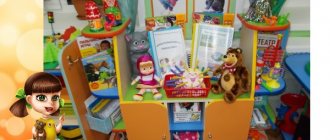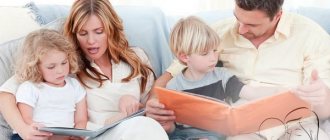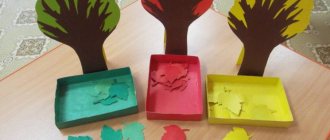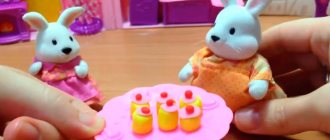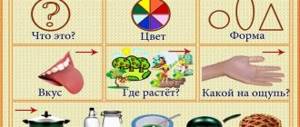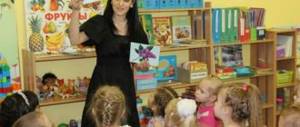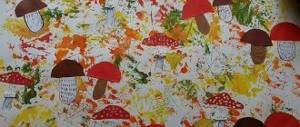Early age is the most crucial period of a person’s life. The main and most important acquisition of an early age is speech. Speech acquisition is a complex, multifaceted mental process, the formation of which occurs from the moment a child is born. So, what are the stages of speech development in young children?
Speech is one of the mental functions that distinguishes us from representatives of the animal world and is one of the main needs. In addition to this, speech is closely related to the formation of other skills in a child, especially at an early age, when the baby has a desire to learn something new. We present to your attention the research work of a graduate of the “Professional Nanny” course in 2020, “Speech development in young children.”
Introduction
Nowadays, the development of speech in children at an early age is one of the most important and main problems, since not all children develop speech according to established standards. This problem is considered most deeply by Gribova O.E. “What to do if your child does not speak / A book for those who are interested” [3] and Tkachenko T.A. “If a preschooler speaks poorly” [13].
Purpose of the work: to study the stages of development and methods of speech formation in young children.
Object of study: preschool children.
Subject of research: stages of speech development and methods of its formation.
Research methods:
- Research theoretical material on the topic of speech development in young children.
- Formation of a methodological piggy bank for speech development.
Theoretical foundations for studying speech development in young children
Stages of speech development at an early age
What should be done to ensure that the child’s speech develops correctly, in time for the baby to grow into a social being?
The development of speech in a child can be divided into several stages:
Period of infant cries (0 months - 2-3 months)
The baby's first cry occurs as a component of a defensive reaction caused by the cessation of placental blood circulation and the cooling of his body in the external atmosphere. A new complex synergy of voice formation is formed before our eyes as a side consequence of the innate synergies of thermoregulation and respiration. It is important that the vocal reaction during the first respiratory factor is not enough for voice formation.
Walking period (2-3 months - 5-6 months)
Observations have shown that the baby reacts to human speech already in the first week of life and stops it by the end of the second. As soon as the baby stops crying, he carefully monitors his mother - her behavior and conversation, imprinting in his memory the leisurely and smooth movements of his hands, head and eyes, the slow pace and volume of her speech.
By 2.5-3 months of life, communication between an adult and him becomes the child’s need, so he again and again uses a set of behavioral reactions that stimulates the adult to communicate emotionally with him.
In the third month of life, the child develops a new skill - he is able to look for an adult and hint at communication. The child fixes a long, concentrated gaze on him and smiles.
In the fourth month of a child’s life, the most significant acquisition is the development of communication between him and an adult using speech sounds.
During the fifth and sixth months, changes also occur in the child’s neuropsychic development. Various speech sounds and movements that are purposeful in nature are added to the child’s proactive appeals to an adult.
During the second half of the baby's life, a business style of communication appears, in which the main role is played by his playing with objects. This communication remains the main one until about 3-4 years of age.
In the period from 6-7 to 9-10 months, the child begins to understand the speech of an adult, which radically changes his usual behavior and affects the development of movements and speech.
At 8-9 months, the baby begins to imitate many sounds unfamiliar to him. The child reacts if he hears his name and can show one of the family members. His reaction to his name is reflexively connected with the sound of words, only in this way can the child learn to understand the meaning of the word.
Period of babbling pseudowords (9-10 months - 12-14 months)
By the end of the first year of life, the baby understands the meaning of more than 10 words and can pronounce at least 5 independently. He is much better at repeating syllables and even words after his parents.
At the tenth month, the child can associate a word he hears with an object familiar to him. Such associations promote speaking, and the baby already perceives simple commands.
Speech development of a child from 1 to 3 years of age.
For the development of understanding of speech at this age stage, it is characteristic that up to 1.5 years of age, connections between objects, actions and their verbal designations develop more intensively. However, the connection between them does not immediately become stable. It is possible that the child may not answer a task correctly understood correctly.
As a child ages, the need for communication arises - he wants to show, tell or ask something. If development occurs normally, then after the first year he develops active speech and the first words appear. True, they can only be understood by a child, depending on which sounds he is able to pronounce and which he cannot.
The period when the child begins to speak
At what age does a child begin to speak? In most cases, this happens by the age of two, even if he manages to utter his first words much earlier.
At the age of 3, the child’s perception of other people’s speech improves. But in some cases, the child hears new words pronounced incorrectly from his peers. Children begin to distinguish between words that are similar in sound and sometimes differ in one sound, focusing not only on a specific situation, but also on the sound design of the word. When learning a new word, a child strives to pronounce it correctly. Children begin to use more complex words with three or more syllables, although they may not always be able to pronounce all sounds correctly.
Speech development in younger preschoolers (4-5 years old)
At the age of 4-5 years, when the child already speaks well and talks with an adult on certain topics, it becomes possible to begin cognitive communication. The child acquires a sufficient vocabulary and begins to form grammatically correct phrases and pronounce sounds normally.
In the fourth year of life, children experience improvements in pronunciation, speech becomes more understandable and distinct. Simple common sentences predominate in children's speech.
In the fifth year of life, the child shows significant progress in mental and speech development. The baby is able to identify and name the characteristics and qualities of objects (for example, size and color), establish the simplest connections and accurately reflect them in speech. His speech becomes more varied, more precise and more meaningful. Resistance to attention and the ability to calmly listen to others to the end increases.
Development of speech in older preschoolers (6-7 years old)
A child of the sixth year of life improves coherent, monologue speech. It can convey the meaning of a fairy tale, poem or a specific situation. When composing a story, he concentrates his attention on the main details, and in most cases misses the secondary ones. In the sixth year, the child’s speech is still improving, phrases become more detailed and accurate, and pronunciation is clearer.
In the seventh year, the child’s speech becomes more and more precise, detailed, and consistent. During the retelling, the child talks not only about the main events, but also touches on everything that he himself read about. He is able to accurately describe a toy or picture, and answer questions posed by the parent after reading fairy tales.
Psychological characteristics and stages of speech formation in preschool children
In the first years of life, the child develops mentally and physically, learns to control his body, think, and masters his native language. The formation of speech occurs sequentially; different age intervals have their own norms.
The ability to speak is an acquired skill that is developed in all children according to a similar scenario. In order to promptly notice deviations in speech development, it is necessary to know the patterns of mental maturation at an early age.
How a child’s speech is formed from birth to 3 years
In the first year after birth, all systems of the newborn actively develop: the structure of the brain matures and becomes more complex, phonemic hearing is formed, and the speech apparatus is trained during crying or involuntary sounds.
Stages of child speech development.
What is the initial stage based on:
- listening to everyday sounds, spoken speech and one’s own voice;
- imitation of an adult (repetition of heard sounds, syllables, and, at the age of about 12 months, words);
- the basics of understanding the meaning of what was said (mainly through emotions, intonation and facial expressions);
- the state of the articulatory apparatus (determines coherence in pronunciation, mobility of speech organs).
In the second year of life, there is a leap in the development of active speech.
The following is typical for communication at this age:
- attempts to use words meaningfully (to name an object);
- up to 1.5-1.8 years there are no common sentences, they are replaced by 1 word (“Drink” as a request);
- at 1.8-2 years the composition of phrases expands, but there is still no grammatical connection between words;
- vocabulary increases (100-300 words depending on the conditions, frequency and quality of communication with adults);
- the development of articulatory organs continues, but the voice has not yet become stronger;
- intonation is mastered;
- individual sounds are pronounced incorrectly (vowels are softened, consonants are skipped, syllables are confused), words are simplified (“Beep” instead of “Machine”).
Development of child speech from 3 to 4 years old
In the third year of life, the cognitive function of speech increases. The child becomes interested in the world around him, begins to ask simple questions, and engages in dialogue with peers.
The speech development of a three-year-old child includes the following stages:
- vocabulary is enriched (2-3 times compared to two years of age);
- verbs are used more often (up to 30% of the active vocabulary), prepositions and pronouns;
- there are errors in agreeing the gender of adjectives for naming objects;
- complex non-conjunctive sentences appear in speech (by the end of 3 years - complex sentences);
- listening comprehension of children's literature improves;
- the speech apparatus becomes mobile, but speech coherence and voice volume remain weak;
- when pronounced, long words with a complex structure are often shortened, syllables are swapped or dropped out;
- memory improves, creative thinking and imagination begin to develop;
- attention remains unstable, the child is distracted.
Interest in surrounding objects stimulates the preschooler to communicate with adults and be the first to start a conversation. In dialogue, the child learns to reason and begins to determine the simple relationship between phenomena.
What features of speech development distinguish the 4-year stage:
- the ability to select names for any objects or actions increases, including those that do not constantly surround the child;
- the arsenal of words is expanding (adjectives, numerals, adverbs, pronouns are actively used);
- retelling events or someone else's speech, talking about one's impressions remain inaccurate due to the inability to correctly choose the right words;
- illogicality and inconsistency of presentation remain, but the grammatical structure of speech improves;
- communication remains situational, requires clarification, the story is tied to the situation;
- memorization of poems, riddles, fairy tales improves, the child easily repeats them, but mostly does not understand the meaning;
- the speech apparatus is improved at an individual pace (by the end of 4 years, children can already speak clearly, intelligibly, or continue to simplify sounds).
Development of speech in a 3-4 year old child.
Formation of speech skills in children from 4 to 5 years old
At the age of five, a preschooler becomes receptive to the social environment. There is an interest in the development of speech hearing through word creation, attempts to rhyme or singing. The formation of speech occurs intensively, the child imitates the manner of communication in the family or kindergarten.
What stages of speech development do 5-year-old children go through:
- the colorfulness and variety of speech increases (in addition to the names of objects, the child knows their signs and is able to logically connect several objects with each other, relying on properties);
- attention does not dissipate, becomes stable;
- the vocabulary is replenished to 2.5-3 thousand words, which stimulates the development of monologue skills, but increases the number of errors and inconsistent phrases in speech;
- the speech organs are sufficiently trained for correct pronunciation, the coherence and clarity of sounds improves, speech becomes understandable to strangers and other children;
- in 30% of cases there are difficulties in pronouncing the sounds r, l, hissing;
- phonetic hearing develops, the ability to distinguish the subtleties of pronunciation (voice pitch, timbre, intonation, tempo).
Features of speech development of a preschooler aged 5-7 years
Children of senior preschool age master coherent speech and compose a monologue from complex sentences and extended phrases. People around you understand the child without further questions.
Signs of the formation of contextual speech in children 6 years old:
- abstract logical thinking develops, understanding of connections and relationships between phenomena, objects, people improves;
- the vocabulary is replenished with forms of already familiar words (prefixes or suffixes are added), 4-6 thousand words are actively used;
- the child operates with generalizing words, collects words into groups based on a common property, and is able to select pairs of antonyms;
- the number of grammatical errors decreases;
- the development of the basic functions of the articulatory organs and mobile muscles of the face is completed, which is why sounds are pronounced clearly;
- With regular implementation of developmental oral exercises, by the age of 7 it is possible to improve the pronunciation of hissing sounds, r, l.
The speech of a seven-year-old child is practically no different from that of an adult.
Creative methods and techniques.
Development at this age is aimed at consolidating the following skills:
- The stock of words that are used daily continues to expand, and the child divides the same concepts according to characteristics (winter or summer clothes);
- means of expression are used (metaphors, epithets, comparisons), words in a figurative meaning (light ball or light hand);
- the monologue becomes detailed and logical, the child does not jump from one thought to another;
- grammatical errors occur rarely, mainly in the absence of prompts from adults;
- the voice becomes loud, the pronunciation is clear, while the child controls the intonation and tempo;
- Emotionality, personal attitude and point of view appear in statements, and individuality actively develops.
The role of the family in the development of a child’s speech
Everyone knows that it is the family that helps a child develop himself as an individual and explore the vast world, but the modern pace of life does not always allow parents to pay enough attention to their children.
At an early age, an adult provides solutions to three main psychological tasks:
- developing the child’s ability to imitate speech and distinguish speech sounds, which is the basis for understanding the meaning of what is said;
- increasing active and passive vocabulary;
- formation of the ability to use speech in communication.
Statistics show that in families where close relationships are formed, children grow up active and independent. In those families where there is a lack of attention in the early years of the child, in adolescence he becomes withdrawn and aggressive.
A child’s speech is formed through the speech of his family members. And only in an environment of live communication, he not only listens to others, but also joins in the dialogue.
Parents are required to know how important the speech of adults is for the formation of a child’s speech and how exactly to conduct a conversation with him. Adults must speak correctly, without distorting words, pronouncing each sound clearly, take their time, pronouncing endings correctly. Faking adult speech to resemble child speech slows down its development, because distorted words reach the child. It is especially important to pronounce unfamiliar, new and long words especially clearly.
Parents who decide to conduct speech development classes at home need to do the following exercises:
- 2-3 games to develop fine motor skills,
- articulation gymnastics (preferably 2 times a day),
- 2-3 games to develop auditory attention or phonemic awareness,
- 2-3 games for the formation of lexical and grammatical categories.
Main stages of speech development
Speech refers to the highest mental function. It depends on how developed the central nervous system is. It is both a means of communication and the basis of thinking. From the moment of birth, the baby finds himself in a social environment, which means he begins to listen and learn to communicate with the outside world. To be sure that development is going in the right direction, you need to know the norms and pathologies of speech for each age stage.
Speech of a child from 2 months to a year
This stage of development can be roughly divided into three stages.
- Booming. From 2 to 5 months. The child begins to intonate his cry, indicating his condition. Humming sounds appear, they are combined with vowels, they arise in communication with parents, and this is the child’s first conscious communication with adults (agu, agi, ge, aa, uh). At the same time, you can see the first smile, hear the child’s first laugh.
- Babble. This period lasts the longest - about seven months, up to one year. Syllables appear (la, yes, pa), word chains (pa-pa, la-la-la), and then the first words, for a start - consisting of identical syllables (pa-pa, ba-ba, ma-ma) . The speech apparatus is already configured to perform various movements, and unique sound combinations are heard (ma-ma-ma, la-la-pa).
- First words. By the first year of life, the child learns to pronounce his first words. Usually there are about 20-25. And they consist of the same syllables. During this period, the child begins to correlate what he says with specific actions, people, objects (the appearance of his mother - “ma-ma”, etc.). At this time, the baby is very actively engaged with toys, learns their names, is able to hear, perceive and find the desired object, not yet being able to name it independently (he will not say that it is a “cat”, but will find a cat among the toys).
Ideally, by the end of the first year of life, speech becomes the child’s main way of communicating with adults.
| Number of months from birth | Speech skills |
| 2 | Pronunciation of individual sounds, the appearance of the first spontaneous vocalizations, usually directed towards an adult. |
| 3 | Experimenting (stretching) with vowel sounds - “uh-uh”, “a-a-a”, “o-o-o”, humming, “cooing” (chest gurgling sounds). |
| 4 | The transformation of individual sounds into entire roulades and the flow of one sound into another - “o-o-o-o-o-o”. |
| 5 | The appearance of random babbling, rhythmic humming, the combination of vowels with some consonant sounds - “gu-gu-gu”, “bu-bu-bu”. |
| 6 | Improving random babble (“na-na-na”, “da-da-da”), merging vowel/consonant sounds, trying to imitate audible sounds, establishing a kind of dialogue with people around. |
| 7 | Frequent repetition of babbling, understanding the meaning of some words, the appearance of semantic pauses (the child babbled something and fell silent, waiting for an adult to answer). |
| 8 | Using babble as a way of communication, trying to pronounce different sounds and their echolalia (repetition without awareness of the meaning). |
| 9 | It is possible (but not necessary) that the first lightweight words “ba-ba”, “ma-ma” will appear, and babbling will become more complex. |
| 10 | Carefully listening to the speech of adults, expanding passive vocabulary, pronouncing new syllables and simple words (quite rare) - “av”, “na”. |
| 11 | An increase in the number of lightweight words or their appearance (if there were none before), semantic content of words and syllables (one word or syllable can have several completely different meanings). |
| 12 | Ability to understand more than 20 words, pronunciation of 5-10 simplified words, improvement of imitation. |
Innovative technologies in speech therapy: laptop and speech therapy corner
Norms of speech development from 1 year to 2 years
The next year of the baby’s life is a continuation of the previous stage. The first 12 months have prepared the articulatory apparatus, and the child is already actively using his own words. He knows how to imitate animals and everyday sounds around him. The following stages of development are distinguished:
- The child recognizes individual objects and understands questions regarding them: “where is the cube?”, “where is the girl?” etc. It can accompany its action with words and sounds. “Talks” with other children using sounds and imitation.
- The baby knows the names of objects and their qualities, emotional assessments. The first meaningful words: cat “meow-meow”, dog “aw-aw”, etc. Sounds may be skipped.
- Understands simple sentences that call for action: “Let’s go eat,” “Give me, please,” etc. Words generalize concepts, for example, “av-av” means all dogs at once, not a specific one. There are already about 30-40 words in the vocabulary.
- By the age of one and a half years, he pronounces almost all vowels and some consonants. Some of them soften. Sound substitutions occur (“ko” – milk). The dictionary has been expanded to 40-95 words. Speech is dominated by gestures, sounds, and facial expressions.
- Imitates adults as much as possible. He turns to them with requests: “Dad, give me!” Knows how to connect words into sentences: “Katya wants la-lya” (a doll). Speech becomes self-sufficient, gestures and facial expressions disappear.
- Knows how to replace incorrectly pronounced words with the correct ones: “la-la” - “doll”. By the age of one year and 9 months, he normally knows about 175 words, using 3-4 in sentences.
- Listens to fairy tales, poems and songs, distinguishes words by sounds (does not confuse mustache and ears). Indicates your actions during the game. Uses pronouns and adjectives.
- Recognizes words that relate to events in his own life. “We are going for a walk in the park, where we met a big dog.” Speech develops very actively when playing with dolls and animals. By the age of 2, the dictionary contains about 300-400 words. Most often - noun and verbs. Adverbs are added: here, here.
Norms of speech development for children aged 3 to 4 years
The writer Korney Chukovsky called this stage in a child’s life a period of “brilliant linguistic giftedness.” At this time, kids are engaged in a kind of creativity: they come up with their own words and names, entire structures, rhyme, compose, create concepts known only to themselves. What characterizes this age for speech:
- The vocabulary already contains 1500–2000 words. The norm is some distortion of difficult to pronounce words, rearrangement of syllables.
- Sentences are built from three to four words; at 4 years old he can pronounce common sentences.
- Complex and even complex constructions and homogeneous members are used.
- They actively use adjectives, pronouns, adverbs, and numerals.
- He can already pronounce vowels without making them soft. Phonetic errors are still the norm. For example, hissing ones are replaced by whistling ones.
- Difficulties arise with the letters “l” and “r”.
- The speech is generally not very coherent; there are some descriptive elements (“This is a cat. She drinks. She is soft.”).
- They easily remember and repeat poems, nursery rhymes, and songs by heart.
- An understanding of the rhythm and volume of speech comes. But kids are not yet able to regulate them on their own.
- They know how to reason and draw conclusions.
- State your first name, last name, patronymic, and the names of relatives and friends.
- Summarizes objects into groups, determines the signs of objects (hot tea, sweet honey) and actions (mom is sleeping, dad has come).
Norms of speech development from 4 to 5 years
At four years old, a child’s language is varied and precise, emotionally vivid. He asks questions and is happy to read and listen. And:
- The vocabulary consists of 2500-3000 words.
- Accurately names objects and their qualities.
- He comes up with his own words and even poems.
- There are many adjectives and prepositions in speech.
- There are more personal pronouns
- A child can form a logically correct statement from several sentences.
- Monologue speech and retelling are mastered.
- Able to clearly and colorfully describe an object, picture, or toy.
- Almost all sounds are pronounced correctly (there may be exceptions with “L” and “R”; they take the longest to form).
- Able to reduce sound volume and speak in a whisper.
- He doesn't speak quickly.
- Uses expressive intonation to read poetry.
Norms of speech development for children 5 – 7 years old
By the age of six, a child can already speak freely with peers and adults. Ideally, by the age of seven, he is ready to master the school curriculum and does not experience communication difficulties. What characterizes this period:
- Many collective nouns and adjectives appear, denoting states and abstract concepts.
- Knows how to use general concepts (“Transport” is an airplane, a bus, and a car).
- Knows and distinguishes between seasons, plants, animals, berries, mushrooms, birds, fish, etc.
- Knows where right is left; how much time.
- Uses the names of days of the week, days, months.
- Knows the name of the country and capital.
- Operates with geographical concepts.
- Knows the rules of pedestrian traffic.
- Declines nouns according to numbers and cases.
- Able to agree nouns with numerals, and adjectives with nouns.
- Uses all parts of speech correctly
- Speech is coherent, able to retell a fairy tale or story.
By the age of seven, there are almost no errors in speech, all sounds are clear, the accents are correct.
| Child's age in months/years | Speech skills |
| 18/1,5 | The presence in the active vocabulary of 5-20 words, mainly nouns. Frequent repetition of one phrase or word, willing repetition of emotionally charged jargon (“eat”, “kitsia”, “musenka”, etc.), the ability to fulfill simple requests. |
| 24/2 | The ability to name different objects from one’s environment, the use of several prepositions, sometimes not entirely correctly (on, under, in). Composing short sentences - “let me drink”, “look, kitsya”, having in the active vocabulary from 100 to 300 words. Occasionally correct use of the pronouns “I”, “you”, “me”. The question “what is this?” appears. |
| 36/3 | Correct use of pronouns, occasional use of some nouns in the plural and verbs in the past tense. Correct use of at least three prepositions – for, on, under; ability to correctly name and show body parts. The active vocabulary ranges from 900 to 1000 words, and the child’s speech is 90% understandable to others. Understanding complex questions (“Are you hungry now?”) and the ability to give an adequate answer to them. |
| 48/4 | Correct use of at least 4 prepositions. Understand and reproduce the names of familiar animals and various objects in magazines or books. Correct repetition of words with four syllables, understanding the ratio of big/small, many/little. Easy fulfillment of simple requests, frequent repetition of various syllables, sounds, phrases and words. |
| 60/5 | Use of many descriptive words – adverbs and adjectives; speech is 100% understandable to adults, despite the possible presence of some articulation problems. Repeating sentences up to nine words; the ability to name household items and understand what they are needed for. Distinguishing between the concepts of today/yesterday/tomorrow; fulfilling three consecutive requests; reducing the number of grammatical errors in speech. |
| 72/6 | The ability to roughly navigate time, compose a coherent story from a picture. The presence of more than 2000 words in the active vocabulary; the emergence of questions “why?”, “why?”, rapid enrichment of vocabulary. |
| 84/7 | Mastery of coherent speech, the ability to retell a text heard or read. There may be small errors when pronouncing complex sentences with participial phrases. Modulation of intonation and volume of the voice, correct articulation of all sounds. Replenishment of active vocabulary up to 3500 words, improvement of speech attention and intensive development of logical thinking. |
Phonetic-phonemic underdevelopment of speech in preschool children
How to determine that a child has speech delay
Delayed speech development is a later acquisition of oral speech in comparison with conventional norms for children under 3 years of age. Delayed speech development can be characterized by qualitative and quantitative underdevelopment.
In order to correctly understand how to determine delayed speech development, it is necessary to know the stages and conditional norms of speech development in children at an early age.
Normally, at 1 year of age, a child’s active vocabulary contains approximately 10 words, and the passive vocabulary contains about 200 words. Up to a certain time, the passive vocabulary is much larger than the active vocabulary. Approximately 1.6 - 1.8 months. words from the passive vocabulary burst into the active vocabulary. In some children, the period of passive speech lasts up to 2 years, although in general speech development is normal.
Deviations in speech development within the normal range are allowed for 2-3 months in girls, and 4-5 months in boys. Only a speech therapist can correctly understand whether a child has a speech development delay or not.
Signs of delayed speech development at different stages of speech ontogenesis may be: lack of response to sound and speech, inactive attempts to repeat other people’s words, absence of one’s own speech at different stages of its development, absence of non-speech methods of communication.
Causes of delayed speech development
Why did the child have a delay in speech development? Causes may include disturbances during intrauterine development and the birth process, as well as adverse effects that the child encountered in the first years of his life.
The most severe disorders occur during 3-4 months of intrauterine development. At this time, the fetal nerve cells form brain structures. The causes of delayed speech development in children associated with the course of pregnancy and childbirth can be factors such as early and late toxicosis of pregnancy, extreme prematurity, birth trauma, intoxication with chemicals and drugs. Delayed speech development may be influenced by genetic factors.
Pathologies during pregnancy and childbirth are not always the causes of underdevelopment. Sometimes disorders are caused by factors affecting the health and upbringing of the child - these are reasons of a biological and social order.
Biological factor . Biological factors include complications after vaccination, a slow rate of maturation of the nervous system, as well as long-term diseases that weaken the child’s immunity at an early age. The biological basis of RRD is most often the presence of minimal brain dysfunction in the child caused by perinatal brain damage.
Hearing loss. It is very dangerous if a child has reduced hearing or cannot hear anything. When hearing loss occurs, a child’s speech cannot fully develop. In this case, even minimal deviations from the norm can be considered the cause of RRD. It is very important at what age the baby lost his hearing. If this happened at 5-6 years old, the child can retain speech skills. When a child is born deaf or has hearing loss in the first years of life, the chances of such a child speaking are zero.
Social factors. Such factors include frequent stress, lack of attention and communication in the family.
Prevention
If parents notice that their child’s speech development is lagging behind the norm, then they definitely need to contact the right specialist. Neurologists, speech therapists, defectologists, and corrective teachers are working on solving this problem. In special cases, the help of a facial surgeon or orthodontist may be needed.
In case of impaired understanding of speech, incomplete mobility of the lips, tongue, low level of fine motor skills, if hearing impairment is suspected, the following studies are carried out: hearing test, examination of speech understanding, examination of fine and gross motor skills, examination of articulation organs, examination of vocabulary, examination of phrasal speech.
Based on the results of the examination, the degree of mental retardation is determined and corrective work is planned. How is delayed speech development treated? Drug therapy, magnetic therapy, electroreflexotherapy, dolphin therapy and hippotherapy are carried out; A teacher and proofreader works with the child.
With uncomplicated forms of pathology and with fully completed correctional work, by the time the child starts school, the delay in the development of the child’s speech will be overcome. To do this, it is important that parents support all the requirements and recommendations of specialists.
Measures to prevent speech delay:
- creating conditions for a favorable course of pregnancy and childbirth, the first years of a child’s life;
- the formation of a speech environment rich in educational toys and various objects;
- ensuring normal social conditions for the life and development of the child;
- assessment of speech development by a speech therapist no later than 2-2.5 years.
In order to quickly compensate for delayed speech development, you need to promptly pay attention to the child’s communication problems. There are several degrees and varieties of RRD, which only a specialist can diagnose. He will also find out the possible cause of the development of a speech defect affecting the central nervous system and brain.
Conclusion on Chapter I
From the very first days of life until the end of the preschool period, children have the most important task - the formation and development of speech. Each year of a child’s life is divided into stages and at each of them speech is improved - from the first infant cry to the composition of complex sentences.
During early childhood, children undergo intensive speech development. During this time, the child’s active vocabulary exceeds the passive one; the child learns that each object has its own name; after he hears the word, he tries to repeat it; he learns to compose simple and complex common sentences.
The development of a child’s speech is closely related to communication with adults, and a lack of this communication can lead to delayed speech development and also affect the development of the baby’s psyche. A child’s communication with the people around him allows him to increase his passive and active vocabulary, improve his pronunciation and the content of his speech.
Speech development tasks
At all stages of growing up, a child masters different levels of oral interaction: the babble of a baby a few months old, the first words and sentences of older children.
Speech expands the possibilities for knowledge. In addition to manipulating objects around him, the child begins to fantasize and learn new things from the stories of others or fiction.
What tasks are performed during speech development:
- master your native speech as a tool for communication and learning;
- enrich your vocabulary (know and use many words);
- learn to speak clearly and correctly, to conduct a dialogue;
- learn the culture of communication (listen to your opponent, do not interrupt, consistently express your thoughts);
- get acquainted with the basics of speech creativity (retelling, composing stories, plots about your impressions of the phenomenon seen);
- listen and understand fairy tales and stories from children's literature;
- remember the correct language structures for future literacy learning.
Ways to develop speech in young children
Game activity as a means of speech development
Play is of great importance in the development of speech in young children. They love to play short outdoor games that help develop their speech. The more children enjoy the game, the more effective the result will be.
Play develops language, and language organizes play. The word is part of reality for the child. It is very important to properly organize the play environment, combining the interests of children and objects that will help in the development of speech.
Passive vocabulary is words the meaning of which a child understands, but does not speak due to age or due to delayed speech development. Children pronounce words and sounds as they hear them.
Games and exercises for developing passive vocabulary:
- "Errands." Choose a toy that is in front of the child and ask him to perform some action with it. For example, brush a doll’s hair, feed a teddy bear.
- "Do It". Ask your baby to clap his hands, jump, squat, spin, raise his arms up, close his eyes, open his mouth, etc.
Speech games aimed at developing vocabulary:
- "Balls and cubes." Offer to match items by color and place them in baskets. It is necessary to mark the color on the basket.
- "Big small". It is suggested to put large cubes and large balls in a large basket, and small ones in a small one.
- "Wonderful bag." Consider toys with your child: cubes, balls, be sure to pronounce their shape, and then hide them in a bag. Then the child must determine the shape of the object by touch and pull it out.
Speech development with the help of fiction
Fiction has a huge impact on the development and enrichment of a child’s speech.
A child’s first acquaintance with fiction begins with nursery rhymes and songs, then he listens to folk tales. A journey into the world of a fairy tale develops the imagination of children, and encourages them to write.
The book is considered as a means of developing children's speech and improving its content. She provides the child with mental and moral education.
Poetry
As you know, the easiest and most effective way to teach a child is through play. This is also true for situations where you need to practice the correct pronunciation of sounds. An interesting author’s technique for developing pronunciation and preparing a child for reading is described HERE: “Interesting games for 3-year-old children”
Speech therapy rhymes are a great way to practice if your child is unable to pronounce a particular sound. You can start learning these poems as early as 2–3 years old.
Word games for young children in kindergarten
Verbal games as a means of successful adaptation of young children to a preschool educational institution.
Author: Maria Borisovna Smirnova, teacher at MBDOU “Kindergarten No. 393 in Chelyabinsk.” Purpose: the article is intended for educators, parents of young children, to help with the adaptation of children to a preschool educational institution. Purpose: to reveal the importance of using word games in the adaptation of young children to the conditions of a preschool educational institution. Objectives: 1. Encourage teachers and parents to use word games for the successful adaptation of young children to a preschool educational institution. 2. Provide a selection of verbal games for adaptation: individual and subgroup. The transition of a young child from family education to a preschool educational institution is an important stage in the child’s development. This is a difficult process, both for the child and for his parents. In addition, this is a strong emotional experience for a child, so teachers and parents should make it as easy as possible for him to enter a new period. The child will have to enter completely different conditions than those to which he is accustomed in the family. Undoubtedly, a clear daily routine, observance of bedtime rituals, positive conversations will help the child adapt faster, but it is also necessary to use the main form of development of young children - play activity. The most important are individual games aimed at: 1) establishing tactile, trusting contacts with an adult; 2) mastering new types of gaming activities; 3) forming friendly contacts with other children. These games are played several times during the day; it is necessary to take into account the emotional state of the child at a specific moment of interaction. After establishing contacts with each child individually, you should move on to games with a subgroup, which have a number of features: 1) the game must begin with a surprise moment that allows you to interest the children and involve them in activities; 2) the game should include different types of activities so that children’s attention does not switch; 3) in the game, children must interact emotionally and express their emotions; 4) musical accompaniment is welcome to relieve emotional stress. When conducting games of any kind, the teacher must charge children with positive emotions, evoke a desire to take part in the game, and set examples of how to perform actions. We offer you a selection of word games for adaptation to preschool. Individual games for adaptation: 1. “My baby” Goals: establishing tactile contacts with the child; Relieving tension. The teacher hugs the baby, saying: You’re my little one, My pretty one... 2. “Jumping” Goals: establishing tactile contacts with the child; Relieving tension. The teacher hugs the baby, puts him in front of him and lifts him up, holding him by the armpits: Kushki - kushki, jumping, jumping, jumping, jumping! We got up on our feet, along the path, Jump-jump, jump-jump! 3. “Bayu - bayushki - bayu..” Goals: establishing tactile contacts with the child; Relieving tension. The teacher sits the child on his lap, gently presses him to himself and gently rocks him. I bayu - bayushki - bayu, Rest, my good one... Bayu - bayushki - bayu, You are with me - and I am with you... 4. “I’ll catch up, I’ll catch up, I’ll catch up!” Goals: establishing tactile contacts with the child; Relieving tension. The teacher organizes a game of catch-up: “I’ll catch up, I’ll catch up, I’ll catch up...”, then hugs the baby: “I’ve caught up!” How fast you are, how good you are!” 5. “Kuk-ku!” Goals: establishing positive emotional contacts between a child and an adult; relieving psycho-emotional stress. The child sits on the teacher’s lap, the teacher performs actions with the child’s hands: he closes and opens his face: Where is our baby? Cuckoo! Here he is our baby! The game is repeated several times. Adaptation games in the subgroup: 1. “Hello, doll Katya!” Goals: create a friendly emotional mood in the group, teach children to perform movements in accordance with the words and as shown by an adult. This is Katya doll! Let's wave our hand at her! Katya came to visit us, “Hello, Katya! How are you?" With the help of a doll, the teacher engages children in a variety of games. 2. “The bear came to visit us!” Goals: create a friendly emotional mood in the group, teach children to monitor their actions and reproduce them. The bear came to visit us! Top-top, top-top! And he knocks with his palms: Clap-clap, clap-clap! 3. “The bird has arrived!” Goals: create a friendly emotional mood in the group, develop coordination of movements. The bird has flown to us! Hello, little bird! You and I will fly too! We flap our wings, we fly far, we fly, we fly, we’ll fly to kindergarten! 4. “Toys” Goals: to create a friendly emotional mood in the group, to develop emotional communication between a child and an adult, and the ability to establish contact. Guys, look who came to us? These are toys! Let's see how beautiful they are! Choose a toy for yourself, stroke it... Now, let's play together, but first let our toys become friends! Let's help them say: “Hello!” 5. “What did the bunny bring us?” Goals: to create a friendly emotional mood in the group, to encourage children to have an emotional response and proactive speech. Guys, look who came to us? Bunny! What did he bring us in the basket? Let's take a look together! Apple, pear, banana, orange, grapes! Take a treat from the bunny and let's go cook him something to eat! Using individual and subgroup games to speed up the adaptation period, we help children make the transition to a new stage of development as painlessly as possible, overcome stress during the period of adaptation to kindergarten, relieve emotional stress, develop children’s interaction skills with the teacher and other children, and develop the ability to communicate through game actions.
We recommend watching:
Didactic games for the development of sensory abilities of children from 1 to 3 years old Didactic games for young children with their own hands Experience of interaction between a teacher and parents in solving educational problems. Early age group Game session on gender education for children of early age group
Similar articles:
Role-playing game in early preschool age
Games, songs, exercises for younger preschoolers “Igralochka”
Educational games for children 2-3 years old in kindergarten. Card index
Didactic game for children 2-3 years old “Let’s feed the doll lunch”
Games to develop attention in young children
Conclusion on chapter 2
The most effective method of developing the speech of a young child is his participation in various types of activities.
Productive activities (appliqué, modeling, drawing) form a child’s idea of the shape, color or properties of a particular object. During the lessons, the child develops imagination, fine motor skills and, most importantly, speech activity. The child discovers a lot of new things and wants to know about everything, this is how the child’s dialogue with an adult or teacher is formed.
Playful activities allow the child to improve not only the coordination of movements while playing with objects, but also the quality and quantity of words in his active vocabulary, as the child gives a name to the object/toy, comes up with a situation in which he is and explains his actions. Thus, we can say that play is a fruitful way to develop speech in children.
All the methods we propose contribute to the development and improvement of the child’s speech, and also help prevent its delay.
Methods of speech development in preschoolers
Preschoolers learn their native language in different ways. Communication is the basis of speech development in children over 3 years old, therefore, in a group, speech development occurs faster. Games with peers always require comments, explanations, and questions.
Other tips on developing speech skills for kindergarten teachers:
- observe the world - not only show surrounding objects, but also pictures, books, films, etc.;
- come up with your own stories - the teacher tells the beginning of the story, describes a phenomenon or toy, then invites preschoolers to compose a continuation;
- reading children's works - teaches attention, develops listening skills, sometimes after reading children are asked to retell it in their own words;
- develop diction - dialogues, word creation, short poems with clear pronunciation of sounds in order to train the articulatory apparatus;
- gaming methods - didactic games, dramatizations teach monologue and colloquial speech, communication culture, and enrich vocabulary.
These methods help consolidate acquired skills and expand the child’s communication capabilities.
